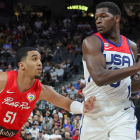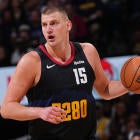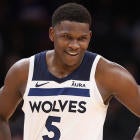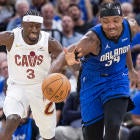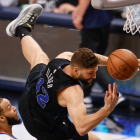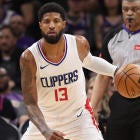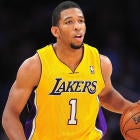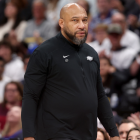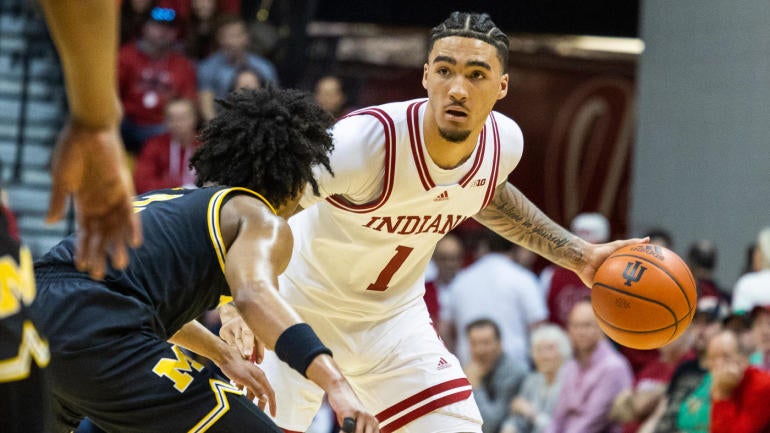
The most brilliant man covering the NFL, CBS Sports' own Pete Prisco, writes a pre-NFL Draft column every year that is among my favorites called the "Better-Than Team." The premise is to highlight a number of players -- 20, 25 or however many he darn well pleases -- he has gathered, based on consensus, that he likes more than the NFL scouts and other talent evaluators do.
This year he led the column with a fourth-rounder he liked more than most. The year before it was a third-rounder.
So with the NBA Draft now less than two weeks out, let's have a little fun and do our best Prisco impression, shall we? I've come up with my own list of players -- nine, to be exact -- who I believe I am generally higher on than the consensus leading up to the draft. I separated them into their current draft projections -- first or second round or undrafted -- just to keep things nice and clean.
Let's go!
Projected first-rounders
Cam Whitmore, Villanova: There are some red flags in Whitmore's profile that warrant further examination -- he had a 6.4% assist rate at Villanova and a 15.1% turnover rate, for instance, according to KenPom.com data -- but beyond that surface level there's reason to believe in Whitmore long-term as a top-five player in this class. He's a great spot-up shooter, he's really heady playing off the ball as a cutter, he can slash in and out of the lane and jumps out of the gym. Combine that with a big frame, tons of defensive upside and some untapped potential as a bucket-getter, I like him as the No. 5 player in this class, and there's a reasonable case that the top-three most productive player in this class -- given how high a floor he projects to have -- should be within reach.
Jalen Hood-Schifino, Indiana: The more I hear from people around the industry the more I believe I might be closer to consensus than it may seem on Hood-Schifino. Ranked No. 12 on the Big Board and one of the biggest risers in recent weeks after a strong showing at the NBA Draft Combine, I think there's a chance he goes as high as No. 8 in this draft and likely won't fall past the Lakers at No. 17.
Amari Bailey, UCLA: Before the NBA Draft Combine, Bailey was viewed as one of several players in the stay-or-go category -- either to stay in school another year or go pro and forgo college eligibility. He left no doubt in Chicago with a stellar showing in the scrimmage portion of the week, showcasing his silky left-handed jumper and playmaking we rarely saw while at UCLA. I have him No. 13 on the Big Board. It's higher than he will go. I admit as much. He's probably going to get scooped somewhere in the 20s is my guess. And also my guess: whoever gets him there will get a top-15 player from this class.
Brandin Podziemski, Santa Clara: Another big riser during the pre-draft process, Podziemski, who won Co-WCC Player of the Year honors last season alongside Gonzaga's Drew Timme, has drawn a wave of attention from teams in recent weeks. He entered the combine as a fringe first-rounder and now sits 19th on the Big Board. That's probably closer to the high end of where he could get selected, but there are teams in the back half of the teams that are showing interest, including Miami -- picking at No. 18 -- which brought him in for a recent workout and came away impressed.
Projected second-rounders
Ricky Council IV, Arkansas: Largely seen as a mid-to-late second-round pick, Council IV's pro day workout in Chicago turned some heads with the way he showed off his athleticism and knocked down shots. On a team with three other potential first-round picks in Anthony Black, Nick Smith and Jordan Walsh, Council led Arkansas last season in scoring, and he may be a consistent 3-point shot away from being valued as a late first-round talent. In a different role in the NBA, his slashing and scoring ability could be valuable to an NBA team in search of backcourt depth.
Adama Sanogo, UConn: To put Sanogo in a box as a throwback big man whose game doesn't fit the modern NBA would be a mistake. He shot 36.5% from 3-point range last season in helping lead UConn to a national championship while averaging 17.7 points and 7.7 boards per game. UConn used him less than 30 minutes a game, so it's difficult to see a world where he's a starting-level player, but his physicality and floor-stretching skills could make him a valuable stretch big off the bench who pays off as a second-round gamble.
Tristan Vukcevic, Serbia: A relative unknown in the 2023 class who came to the combine with potential late second-round buzz, Vukcevic, a 7-footer who is playing in the Adriatic League, acquitted himself nicely against his peers with his sharpshooting and scoring finesses at every level of the floor. Bigs who can create and score are few and far between, and his comfort in adding shooting at his size brings immense appeal.
Kobe Brown, Missouri: Brown was one of the more productive upperclassmen in college basketball last season for a Missouri team that far outperformed relative to preseason expectations. He shot 45.5% from 3-point range -- the best mark of his career -- and posted statistically his most impressive season to date as a combo forward for the Tigers. Just look at his analytics profile from Synergy:
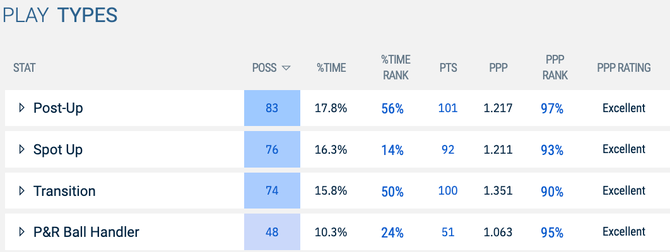
Early-to-mid second round feels like his range right now. He's ranked No. 39 on the Big Board so I don't want to go too crazy here, but it should be known that I am a believer in Brown's ability at the NBA level.
Projected to go undrafted
Colin Castleton, Florida: Don't let the skinny frame fool ya: Castleton has big game. He's long, he's wiry, and he is killer in his role as a rim-protector on defense who can add shot-creation and scoring in the paint and mid-range. He can't shoot from 3-point range -- or at least he didn't do it much at Florida, and wasn't efficient doing so in limited opportunities -- but what he can do, he does well. There's space for him on an NBA roster to grow into a depth piece.
Mike Miles Jr., TCU: Measured as the shortest player at this year's NBA Combine with the shortest wingspan, Miles Jr. would be an outlier to hit as a useful rotation piece given his 6-0.75" height (without shoes) and his negative .25 wingspan. That's baked into the cost here, though. He's a tough shot-maker who can play both guard spots who made big strides as a shooter last season while soaking up a major role on an NCAA Tournament team.














